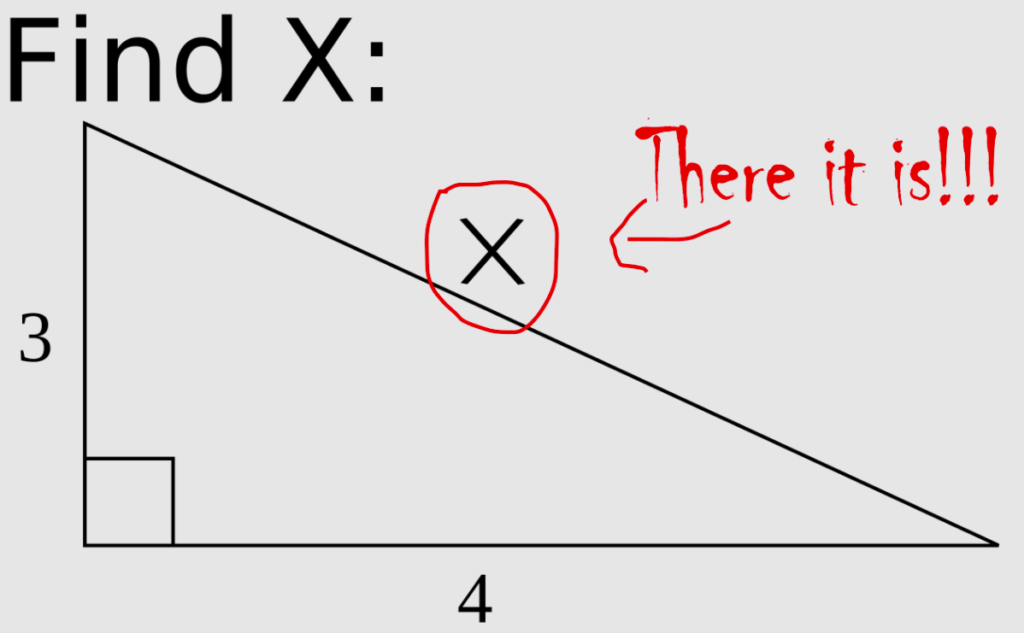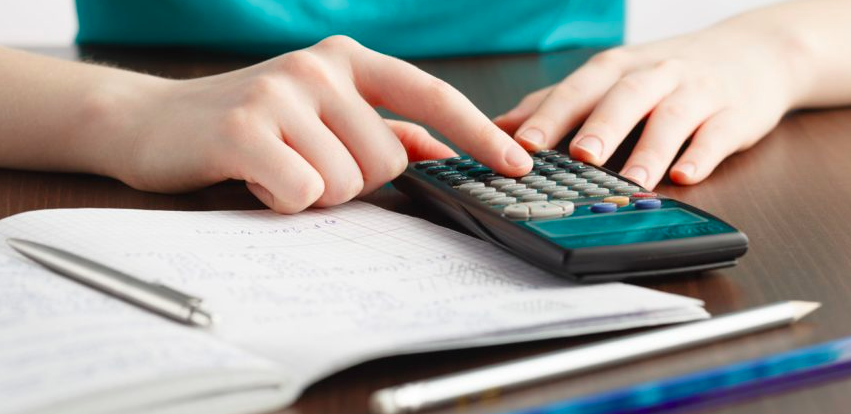Like the SAT, the PSAT includes a reading test, a writing test, and a math test. In this post, we’re going to give you the rundown about what math to expect on the PSAT, and how you can master these skills before test day.
The PSAT, or “preliminary” SAT, is considered by many to be a “practice” version of the real SAT. However, like Allen Iverson, we’re not interested in talking about practice – we know the PSAT is important, and we’re here to give it the respect it deserves.

While not used on college applications, a good score on the PSAT can open doors for financial aid and scholarship opportunities. For example, the PSAT is used as the qualifying test for the National Merit Scholarship. For more information on how to become a National Merit Scholar, visit this link.
About the PSAT Math Section
How long is the PSAT?
The entire PSAT is two hours and 45 minutes long. There is a five-minute break after the reading section (the first section of the test), and a five-minute break before the calculator-optional portion of the math test, which is the final section of the test.
Inside the math section, there are two test portions. You are not allowed to use a calculator on the first section, but you are permitted to use an approved calculator on the second section.
| Section of Test | Time Allowed | Multiple Choice Questions | Grid-In Questions |
| Math – No Calculator Allowed | 25 minutes | 13 | 4 |
| Math – Calculator Optional | 45 minutes | 27 | 4 |
How is the math PSAT structured?
Many questions are standalone questions; some questions will be in groups and will focus on a set of graphs, charts, or tables (Example: “Questions 9-11 refer to the following information”).
Most questions are multiple-choice. You’ll choose the best answer out of the four choices that are provided. There is no penalty for guessing, so if you don’t know an answer, you’re better off marking down one than leaving the question blank.
There are also four “grid-in” questions. You’ll write in a numeric answer for these questions. Some grid-in questions can have more than one right answer. For more information on grid-in questions, visit this link.
What resources are provided on the math PSAT?
The SAT provides a list of everyday formulas (pictured below), as well as scratch paper inside the test booklet.

While it’s awesome that you don’t have to memorize these formulas before the test, you also don’t want this to be the first time you’ve ever seen this material. It’s a good idea to take some time before the test to learn about these formulas and how to use them effectively.
You’ll also need to bring your own #2 pencils and erasers (two should be enough). You can also bring a calculator to use on the calculator-optional portion of the test if you would like, but it has to be an approved calculator (follow this link to view the SAT/PSAT Calculator Policy).
Check out this link to learn more about what resources are provided.
What makes SAT math and PSAT math different?
Overall, the tests are fairly similar. There aren’t major differences in content or structure. The College Board, which is the organization that oversees the SAT and PSAT, would tell you that the PSAT is slightly less difficult than the SAT, but that both tests are assessing the same skills.
There are small structural differences, such as how many questions are on each section, how much time you have, and the scoring of the tests. Finally, you’ll want to note that the PSAT is only offered once a year (usually in October), while the SAT is offered several times throughout the year.
Click here to see a breakdown of the key differences between the SAT and the PSAT.
What kinds of questions are on the PSAT math test?
Like the SAT, there are four types of math questions on the PSAT, divided into the following categories: Heart of Algebra, Problem-Solving and Data Analysis, Passport to Advanced Math, and Additional Topics in Math. We’ll cover each one in detail below.
Often, we like to put example questions in these blog posts. We’re not going to do that here because it would take up quite a bit of space. This post would end up being more clunky and awkward than I was when I took the PSAT as a teenager – and nobody wants to see that. But we do want you to have good practice material – and you can access plenty of it here.
Heart of Algebra
There are 16 “Heart of Algebra” questions on the PSAT. This section tests your ability to solve linear equations and systems. Some questions are straightforward, while others are asked as word problems.
Here are a few things this section could cover:
- Solve linear equations with one or two variables
- Create and use a system of two variables and two linear equations
- Create and use linear equalities in one or two variables
- Identify equations of lines on a graph
- Interpret two variables in a linear equation
- For a complete list of material covered in the “Heart of Algebra” section, visit this link.
Good news – most students find this section to be the easiest one. However, what trips people up here is that the material is usually covered in middle school math classes, so you may be a bit rusty. It’s smart to spend some time reviewing and brushing up on these skills before you take the PSAT.
Problem-Solving and Data Analysis

There are 16 problem-solving and data analysis questions. This is your opportunity to show how well you’re able to analyze and make conclusions from the data provided. You can expect plenty of graphs, charts, and tables in this section.
Questions cover these kinds of topics:
- Converting units (Ex: Changing kilometers per hour to meters per second)
- Choosing appropriate graphical representations for data sets
- Interpreting the slope and intercepts of a line
- Computing and interpreting probability
- Evaluating statistical claims of the results of a study
- Using percentages in a variety of contexts, including discounts, interest rates, taxes, and tips
- For a complete list of material covered in the “Problem-Solving and Data Analysis” section, visit this link.
This section is usually the one where students are the least familiar with the material. You may not have spent much time learning about this one in math class. Spend some time familiarizing yourself with the content here before you go in to take the PSAT.
Passport to Advanced Math
There are 14 “passport to advanced math” questions. Here you’ll deal with complex equations and functions. You may be asked to manipulate or rewrite equations, in addition to drawing conclusions based on the information provided.
Some skills that are important here:
- Solving quadratic and non-linear equations
- Understanding the graphs of quadratic and higher-order functions
- Interpreting a solution, constant variable, or term based on the context of a nonlinear equation in one variable
- Creating and using quadratic or exponential functions
- Using a graph to identify other equations in a system with a non-linear equation
- For a complete list of material covered in the “Passport to Advanced Math” section, visit this link.
This section can be challenging for many students because it’s usually the one that’s the least familiar. However, these questions not only represent around 30% of all math questions on the PSAT, but they are important skills to know for any student considering a career in math, science, engineering, or another STEM-related fields.

Additional Topics in Math
This topic can be intimidating, because of the wide range of possible questions. However, don’t stress too much – there’s only two questions from this category on the entire test (one in the calculator-optional section, and one in the no-calculator section).
These questions cover geometry and trigonometry most relevant to college and career readiness. If you wanted to get more specific, these questions might ask you to…
- Problems involving area and volume
- Right triangle trigonometry
- Using the complex number system to add, subtract, multiply, and divide with complex numbers
- Using definitions, properties, and theorems relating to circles
- Concepts relating to lines, angles, and triangles
- For a complete list of material covered in the “Additional Topics in Math” section, visit this link.

How to Prepare for the Math PSAT
Okay, so that’s a lot of information. You’re probably feeling more overwhelmed than Mirabel Madrigal when she realized the casita was in danger. You may not have magic on your side, but you don’t need a miracle to be successful. Here are some strategies and tips that may help:
Make sure you’re familiar with the content
You may have world-class critical reasoning skills, but that won’t help if you don’t also have the math skills the test is assessing. Take time to work on these skills so that they become as automatic as brushing your teeth or tying your shoes.
Learn to do basic math without a calculator
You don’t want to waste time on test day trying to do basic multiplication or remembering how to use a formula. Review these before test day, and they’ll be easy to recall when you need them.
Dig into official PSAT test questions
Taking practice tests ahead of time will help you visualize what the actual test will be like, and what you should prepare for so that you aren’t surprised on test day
Pace yourself
This isn’t Mario Kart. You don’t get bonus points for finishing first. You have 25 minutes on the no-calculator section and 45 minutes on the calculator-optional section. Take time to read each question thoroughly, and double-check your work if you’re unsure about your answer.
Use the scratch paper provided in the PSAT test booklet
The test booklet will contain scratch paper for you to work on. Don’t be afraid to use it!
This will be especially helpful if you come up with a final answer that doesn’t match any of the choices given. If you’re doing the math in your head, you’ll have to start from the beginning. However, if your work is written out, you’ll be able to review each step individually (in a much quicker fashion) to see where an error may have been made. Don’t worry, you’re not graded on any work or mistakes you make on your scratch paper, only the answer sheet will be scored.
Circle or underline key words in the question
Words aren’t all created equal. Making notes of what words are important will help your brain focus on the question being asked.
Take this question for example: “A given sphere has a volume of 47. If its radius is tripled, what is its new volume?”
In this question, you could circle the words “volume,” “radius,” and “tripled.” This helps you better understand that in order to solve the problem, you’ll have to determine the radius, and triple it to determine the circle’s new volume.
Identify what question is actually being asked
This is especially helpful in word problems. Perhaps you find the plot in word problems thrilling, but more than likely, you just want to know what math problem is hiding in the paragraph. Identifying what the question is really asking can help you tune out information that isn’t helpful, and focus on what you need to do in order to answer the question.
Here’s an example: “Fifteen third graders participated in the school fundraiser by selling packages of chocolate. The amount each of them raised can be expressed by the equation m=4.5p-.5w, where m is the amount of money raised, p is the number of packages sold and w is the number of weeks it took to sell the packages. If the average student who participated sold 22 packages over four weeks, how much money did the fundraiser make?”
Honestly, we all love chocolate, but that detail isn’t really important for solving this problem. Neither is the fact that these students were in the third grade. What is important is knowing what the question is asking (“How much money did the fundraiser raise,”) in addition to knowing that the formula provided is for each individual student’s profits, and not for the fundraiser as a whole.
Double-check your answer before moving on
If you’re a fast test-taker, a great way to spend the extra time may be to review your answer to each question before you move on. Other students prepare to answer all the questions, and then go back to the beginning and review questions all at once. This can be helpful, because a fresh look at a question may help you catch details inside the question that you may have missed the first time.

What Now?
So now you know what math is on the PSAT. What should you do next?
The College Board mentions that preparing in advance for the PSAT is not required. However, they don’t say that you shouldn’t prepare. Take some time to review the material, especially sections that are unfamiliar, or that you haven’t covered recently in school. Take a practice test or two, and figure out what skills you can improve before test day.
Finally, many students find it helpful to have a study partner or tutor to help them get ready for the test. That’s where we would love to help. Contact us today to learn about how we can help you prepare more effectively.











Comments